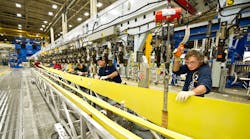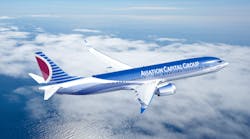Boeing Commercial Airplanes reported it has started production of its Next-Generation 737 jet at the rate of 38 airplanes per month. Over the past two years, production rates for 737s have risen by over 20%, from 31.5 to 38 airplanes/month, and according to Boeing the rate will rise again to 42 airplanes/month next year.
The first Next-Generation 737s built at the new rate are scheduled to be delivered to customers during Q2 of this year.
Boeing’s 737 Next Generation, or 737NG, is the third generation of the 737 jet, a narrow-body airliner for short- to medium-range flights, typically carrying 110 to 210 passengers. There are four model variants. The 737NG has been in production since 1996, and Boeing said in 2010 it would increase production to 34 airplanes/month in order to fill outstanding demand.
Mechanics at Boeing’s assembly plant in Renton, Wash., started loading initial parts of jets’ internal support structures for wings (known as “spars”) into an automated spar-assembly machine. Building the spar is the first step to wing construction, and is the first step in the structural assembly of an aircraft.
"The first spar load serves as the defining moment for our latest rate break, and the 737 team did it as planned, on schedule," stated 737 program vice president and general manager Beverly Wyse. "We have more hard work ahead of us, but we are well on our way to another successful production rate increase."







